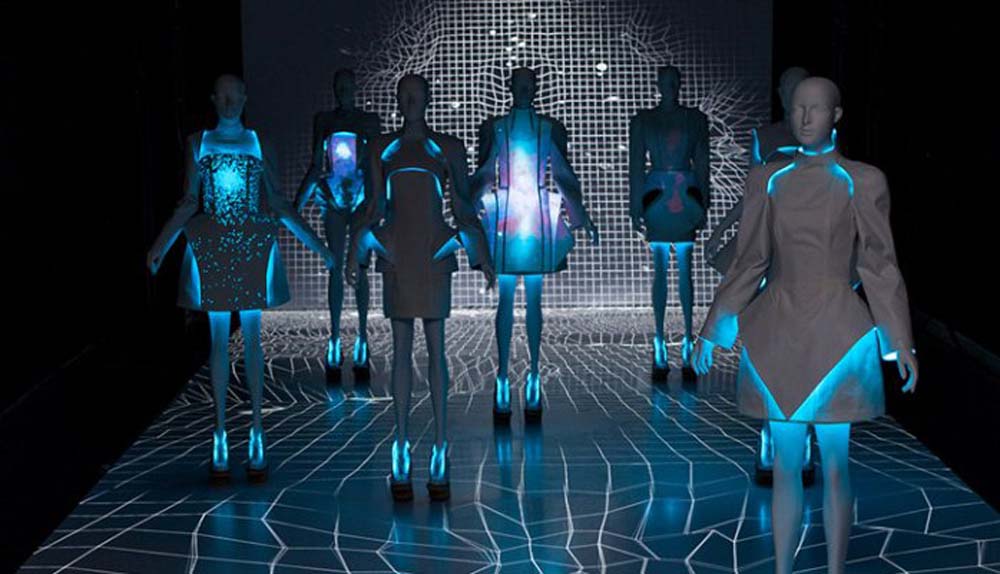The intersection of fashion and technology, often referred to as FashionTech, is where innovation meets style, and the runway meets the motherboard. In an industry that thrives on creativity and forward-thinking, it was only a matter of time before technology began to weave itself into the very fabric of fashion. From smart textiles to virtual fashion shows, FashionTech is transforming the way we design, produce, and experience fashion. Let’s explore how this exciting merger is shaping the future of what we wear.
1. Smart Textiles: Clothes That Do More Than Just Look Good
Gone are the days when clothes were just pieces of fabric stitched together. Smart textiles are revolutionizing the fashion industry by integrating technology into the very threads of our garments. Imagine wearing a shirt that can monitor your heart rate, adjust to your body temperature, or even charge your smartphone. Sounds like something out of a sci-fi movie, right? But it’s happening now.
These smart fabrics are embedded with tiny sensors and conductive threads that can interact with your body and the environment. For instance, athletes can wear smart sportswear that tracks their performance and provides real-time feedback. Fashion designers are also experimenting with fabrics that change color or texture in response to external stimuli, adding a whole new dimension to clothing design. It’s fashion, but make it futuristic.
2. 3D Printing: Redefining Clothing Production
3D printing has been making waves across various industries, and fashion is no exception. 3D printing allows designers to create intricate, customizable designs that would be nearly impossible to achieve with traditional methods. This technology is not only pushing the boundaries of creativity but also making fashion more sustainable.
By using 3D printing, designers can produce garments on-demand, reducing waste and the need for mass production. Moreover, 3D-printed clothes can be tailored to fit individual body shapes perfectly, offering a level of customization that’s unparalleled. From avant-garde dresses to functional footwear, 3D printing is opening up new possibilities for fashion that were once unimaginable.
3. Virtual and Augmented Reality: A New Way to Shop
Shopping for clothes has always been a tactile experience—feeling the fabric, trying on different sizes, and seeing how an outfit looks in the mirror. But with the advent of virtual reality (VR) and augmented reality (AR), the shopping experience is being transformed into something entirely new.
Imagine slipping on a VR headset and being instantly transported to a virtual boutique where you can browse and try on clothes without ever leaving your home. Or using an AR app to see how that new jacket would look on you without having to physically try it on. These technologies are making shopping more convenient, immersive, and fun. Plus, they’re giving retailers new ways to engage with customers in the digital age.
4. Wearable Technology: Fashion Meets Functionality
When we think of wearable technology, the first things that come to mind are probably smartwatches and fitness trackers. But wearable tech is expanding far beyond these devices, blending seamlessly with fashion to create functional yet stylish accessories.
Think of smart jewelry that notifies you of incoming calls, glasses that overlay information onto your field of vision, or even jackets that let you control your smartphone with a tap on the sleeve. Wearable technology is making our lives more convenient while allowing us to express our personal style. It’s the perfect marriage of fashion and function, proving that tech can be both practical and chic.
5. Sustainable Fashion: Tech to Save the Planet
Sustainability has become a major focus in the fashion industry, and technology is playing a key role in driving the shift towards more eco-friendly fashion. From reducing waste to creating new materials, FashionTech is helping to make fashion more sustainable in several ways.
For example, some companies are using blockchain technology to track the lifecycle of their products, ensuring transparency in sourcing and production. Others are developing new, sustainable materials, like lab-grown leather and biodegradable fabrics, that have a lower environmental impact than traditional textiles. Additionally, advancements in recycling technologies are making it easier to repurpose old garments into new ones, closing the loop in fashion production.
6. Digital Fashion: Clothes You Can’t Wear (But Still Buy)
In the digital age, not everything we buy needs to be tangible. Digital fashion is an emerging trend where designers create virtual garments that can be worn by digital avatars or superimposed onto photos and videos of real people. Yes, you read that right—clothes that exist only in the digital realm.
While it might sound strange, digital fashion is gaining traction, especially in the world of social media and gaming. It allows people to experiment with bold, futuristic styles without the constraints of physical materials. Plus, it’s a sustainable option since no actual resources are used in creating these digital garments. For influencers and gamers, digital fashion offers a way to stand out and express their style in a unique and eco-friendly way.
Final Thoughts
FashionTech is not just a trend—it’s the future of fashion. As technology continues to evolve, so too will the possibilities for innovation in the fashion industry. From smart textiles and 3D printing to virtual reality and sustainable fashion, the merger of fashion and technology is opening up new avenues for creativity, efficiency, and sustainability.
As we look forward to what’s next, one thing is clear: FashionTech is here to stay, and it’s going to change the way we think about, create, and experience fashion. So, whether you’re a tech enthusiast or a fashionista (or both), there’s never been a more exciting time to explore the cutting-edge world of FashionTech.
